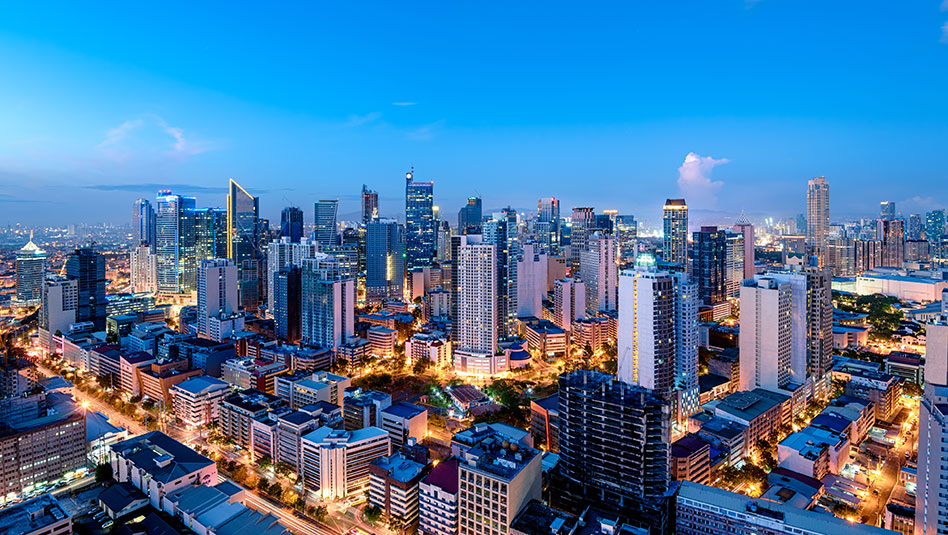




Quarterly Economic Growth Release: More BSP cuts to come
 DOWNLOAD
DOWNLOAD

Monthly Economic Update: Fed catches up
 DOWNLOAD
DOWNLOAD

Inflation Update: Steady and mellow
 DOWNLOAD
DOWNLOAD


Philippine dollar reserves drop to USD 106.8B

The Philippines gross international reserves (GIR) inched lower at end-December, falling short of the central bank’s full-year projection.
Preliminary data released by the Bangko Sentral ng Pilipinas (BSP) on Tuesday showed reserves stood at USD 106.84 billion, down by 1.5% from USD 108.49 billion at end-November.
Year on year, dollar reserves rose by 3% from USD 103.75 billion a year earlier.
The GIR was below the BSP’s end-2024 projection of USD 109 billion.
“The month-on-month decrease in the GIR level reflected mainly the BSP’s net foreign exchange operations,” the central bank said.
Rizal Commercial Banking Corp. Chief Economist Michael L. Ricafort said the peso volatility in the fourth quarter might have weighed on the GIR level due to the “need to smoothen or manage the volatility.”
In 2024, the peso closed at its record low of PHP 59 thrice — on Nov. 21, Nov. 26 and Dec. 19.
At its end-December level, the GIR was enough to cover 7.5 months’ worth of imports of goods and payments of services and primary income.
“By convention, GIR is viewed to be adequate if it can finance at least three-months’ worth of the country’s imports of goods and payments of services and primary income,” the BSP said.
The dollar reserves were also equivalent to about 3.8 times the country’s short-term external debt based on residual maturity.
Having an ample level of foreign exchange buffers safeguards an economy from market volatility and is an assurance of the country’s capability for debt repayment in the event of an economic downturn.
The central bank said the lower GIR level was due to the “drawdown on the National Government’s (NG) deposits with the BSP to pay off its foreign currency debt obligations.”
Foreign currency deposits slumped by 20.6% to USD 1.37 billion as of end-December from USD 1.73 billion the month prior. It increased by 78.2% from USD 770.7 million as of end-2023.
The BSP also cited the downward valuation adjustments in its gold holdings due to the “decrease in the price of gold in the international market.”
The country’s gold reserves were valued at USD 11 billion as of end-2024, down by 0.2% from USD 11.03 billion at end-November. However, it was higher by 4.2% from USD 10.56 billion a year ago.
Central bank data showed reserves in the form of foreign investments declined by 1.4% to USD 90 billion as of December from USD 91.3 billion a month earlier. It rose by 2.5% from USD 87.85 billion at end-December 2023.
Net international reserves dropped by 1.5% to USD 106.83 billion from USD 108.46 billion a month ago.
Net international reserves are the difference between the BSP’s reserve assets (GIR) and reserve liabilities such as short-term foreign debt, and credit and loans from the International Monetary Fund (IMF).
The Philippines’ reserve position in the IMF went up by 1.1% month on month to USD 675.6 million from USD 668.2 million. Year on year, it decreased by 11.2% from $760.9 million.
Special drawing rights held by the Philippines — the amount the country can tap from the IMF — was steady at USD 3.76 billion at end-December. However, it slipped by 1.3% from USD 3.81 billion a year ago.
Mr. Ricafort said the dip in dollar reserves was due to lower foreign investments amid “global market volatility on possible Trump protectionist measures” and its impact on US inflation and interest rates.
Markets are pricing in US President-elect Donald J. Trump’s policies on the Philippine economy, which relies heavily on the US for trade, remittances and other key economic inflows.
He also cited the government’s payment of foreign debts and other foreign obligations towards the end of the year.
“For the coming months, continued growth in overseas Filipino worker (OFW) remittances, business process outsourcing revenues, foreign tourism receipts, and foreign investments would still support balance of payments and GIR data,” Mr. Ricafort added.
The BSP expects to have USD 110 billion in dollar reserves by end-2025. — Luisa Maria Jacinta C. Jocson
This article originally appeared on bworldonline.com





 By BusinessWorld
By BusinessWorld